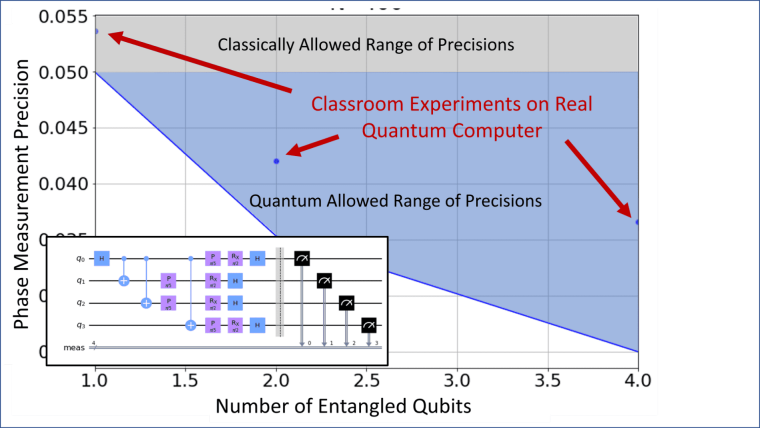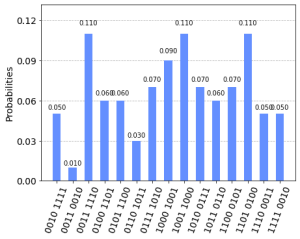
Published:
A series of solutions to the equations a+b=17 obtained by Grover's algorithm. In almost all instanced the left and right binary blocks add up to 17.
Image: Falk EilenbergerThis semester marks the first installment of the all-new Students lab course in Experimental Quantum Technologies of the Abbe School of Photonics, which covers topics of Quantum Photonics and Quantum Computing.
The first part of the lab course was a three-lab series on applied problems in Quantum Computing. After an introductory session on the usual suspects (Quantum Random Number Generation, Entanglement), students had to experimentally adress topics in Quantum Phase Sensing and to use Grover's algorithm to find solutions to the simple algebraic problem, a+b=17. Find interactive solution notebooks in the teaching section.
Student feedback was amazing, with most of the student teams getting really stuck in and some coming up with solutions above and beyond the level of the master solutions. This highlights the power of cloud-based Quantum Computing hardware as a tool in interactive teaching, leading to a much more substantial understanding of Quantum algorithms as pen&paper lecture ever could. Doing is believing.
I'd like to acknowledge support by the Fraunhofer QuantumNow InitiativeExternal link , which provided access to the high-end compute resources, without which these demonstrations would not have been possible.
